Fingerprints and smudges on medical displays degrade image quality. These distractions can obscure critical details and compromise clinical focus. A proper surface treatment is essential to maintain a clear, unobstructed view.
This article evaluates two primary anti-fingerprint surface treatments: nano oleophobic coatings and matte-etched finishes. I will compare their properties, including smudge resistance, glare reduction, optical clarity, durability, ease of cleaning, and how the choice is tailored to specific medical use scenarios.
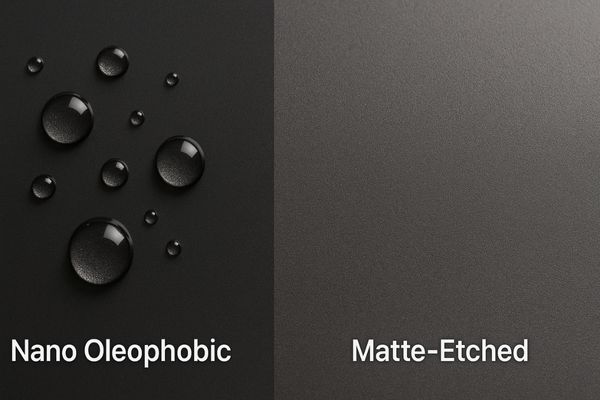
The surface of a medical display is the final interface between billion-dollar imaging technology and the clinician’s eye. Its properties are not a trivial matter. Fingerprints, grease, and reflections can introduce artifacts that interfere with diagnostic interpretation or surgical precision. The choice between a nano oleophobic coating1 and a matte-etched finish2 is therefore a critical design decision, driven entirely by the display’s intended clinical environment. Each technology offers a distinct set of advantages and compromises. Understanding this balance between pristine clarity and reflection control is key to selecting the right tool for the job.
In medical environments, display surfaces are constantly exposed to potential contamination from fingerprints and smudges, particularly with the rise of touch-enabled interfaces. A high-performance surgical monitor like the MS275P must maintain optical clarity even under the harsh, bright lights of an operating room. The choice of surface finish directly impacts this performance. A nano oleophobic coating3 creates an exceptionally smooth, low-friction surface that actively repels oils, making it easy to clean and preserving image sharpness. Alternatively, a matte-etched finish4 uses a micro-textured surface to diffuse ambient light, reducing glare and making fingerprints less apparent. This evaluation is not merely about aesthetics; it is about ensuring that nothing on the screen’s surface obstructs the critical visual data beneath. The ideal solution must balance optical fidelity, durability, and practical usability within demanding clinical workflows.
Nano oleophobic coatings resist smudges with hydrophobic properties
Oily fingerprints cling to standard glass, creating distracting smudges. These marks require constant cleaning and can degrade image clarity. A specialized coating provides a simple, effective solution.
Nano oleophobic coatings create a low surface energy layer that repels oils and water. This makes it difficult for fingerprints to adhere to the screen and allows any smudges that do occur to be wiped away effortlessly.
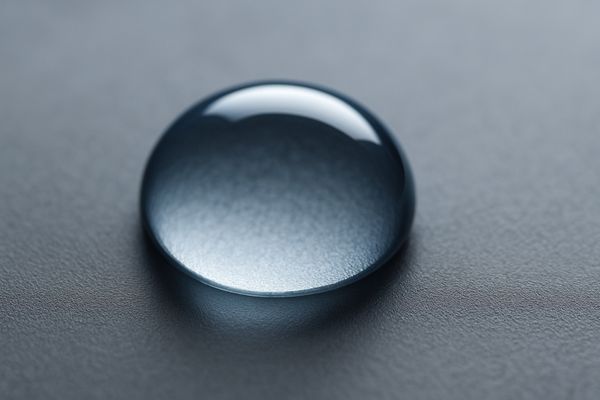
A nano oleophobic coating5 is a chemically applied layer, mere nanometers thick, that fundamentally changes the surface properties of the display’s glass. It is both oleophobic (oil-repelling) and hydrophobic (water-repelling). This is achieved by creating a fluoropolymer-based surface6 with very low surface energy, similar to that of Teflon. When oil from a fingerprint comes into contact with this surface, it is unable to spread out and adhere. Instead, it beads up, resulting in a much less noticeable mark that can be wiped away easily with a simple microfiber cloth without smearing. This is particularly advantageous for interactive displays or monitors frequently adjusted by hand in a sterile environment. For a large-format surgical monitor like the MS430PC, which may be positioned by different members of the surgical team, this coating ensures that the pristine 4K image is not compromised by incidental contact. The primary benefit is maintaining maximum image fidelity and clarity with minimal maintenance effort.
Matte-etched surfaces diffuse reflections and hide fingerprints
Bright overhead lights in clinics create screen glare. These reflections can wash out the image and cause eye strain. A textured surface provides a permanent solution by scattering the light.
A matte-etched finish is a physical alteration of the glass surface itself. Its microscopic texture scatters ambient light to reduce specular reflections and glare, and the non-uniform surface makes fingerprints much less visible.
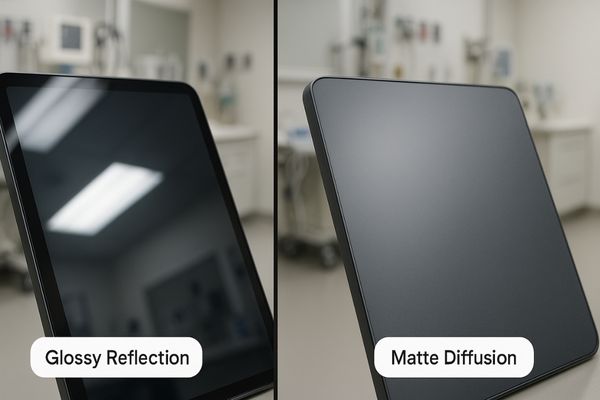
Unlike a chemical coating, a matte-etched finish7 is a permanent physical treatment. The surface of the glass is microscopically roughened using an acid-etching process, creating a non-uniform texture. This texture works by scattering incoming light in multiple directions rather than reflecting it directly back at the viewer like a mirror. This diffusion of light is highly effective at mitigating glare from overhead surgical lights or bright ambient lighting in a reading room, reducing eye fatigue for the clinician. An additional benefit of this textured surface is its ability to hide fingerprints. The oils from a fingerprint cannot form a smooth, continuous film on the uneven surface, making them significantly less noticeable than on a glossy screen. While this finish is exceptionally durable, the light-scattering property8 can introduce a slight softness or "sparkle" to the image. For a general diagnostic monitor like the MD26GA, this trade-off is often acceptable for the significant benefit of reduced glare during long reading sessions.
Optical clarity is higher in nano oleophobic finishes
Any treatment applied to a screen has the potential to affect image quality. While reducing reflections is important, it cannot come at the cost of diagnostic detail. The best finish preserves pixel-level sharpness.
Nano oleophobic coatings are optically transparent and do not scatter light. This preserves the original sharpness, contrast, and color fidelity of the display panel, offering superior visual performance compared to the slightly softening effect of matte surfaces.
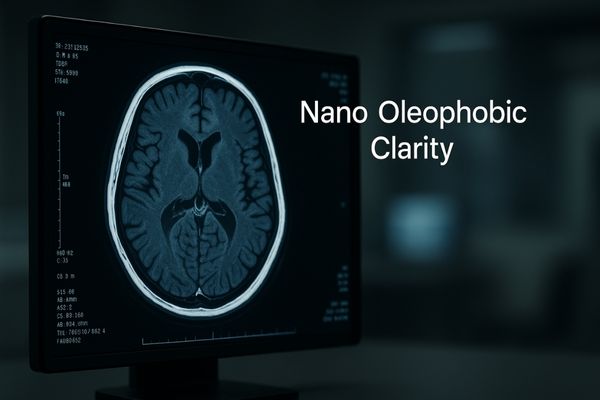
The ultimate goal of a medical display is to present the source image with the highest possible fidelity. Optical clarity is a measure of how well a surface treatment achieves this. Because a nano oleophobic coating is an ultra-thin, chemically bonded layer, it is almost perfectly transparent and does not interfere with the light path from the display’s pixels to the viewer’s eye. There is no scattering or diffusion of light, meaning the image retains its native sharpness, contrast ratio, and color purity. This is critically important for high-resolution diagnostic monitors9 where the ability to discern the finest details is paramount. For a state-of-the-art display like the MD120C, which is used for viewing complex multi-modality images, any degradation of image sharpness is unacceptable. The use of a nano oleophobic finish ensures that the monitor’s exceptional resolution is not compromised by the surface treatment, delivering the clearest possible image to the radiologist. The trade-off is that this type of glossy surface does not mitigate glare as effectively as a matte finish.
Surface Finish Performance Comparison
| Attribute | Nano Oleophobic Coating | Matte-Etched Finish | Primary Advantage |
|---|---|---|---|
| Image Sharpness | Excellent (No Diffusion) | Good (Slight Softening) | Clarity |
| Glare Reduction | Poor (Specular Reflections) | Excellent (Light Diffusion) | Comfort |
| Fingerprint Resistance | Good (Repels Oils) | Excellent (Hides Smudges) | Cleanliness |
| Contrast | Highest (True Blacks) | Very Good (Slightly Raised) | Fidelity |
Matte finishes reduce glare but slightly soften image detail
In brightly lit environments, glare is a significant problem. A monitor that is unreadable due to reflections is useless. Matte finishes are the most effective solution for managing this environmental challenge.
By scattering light, matte-etched surfaces dramatically reduce mirror-like reflections. However, this same light-scattering mechanism can cause a minor loss of sharpness and a subtle "sparkle" effect, slightly softening the finest image details.
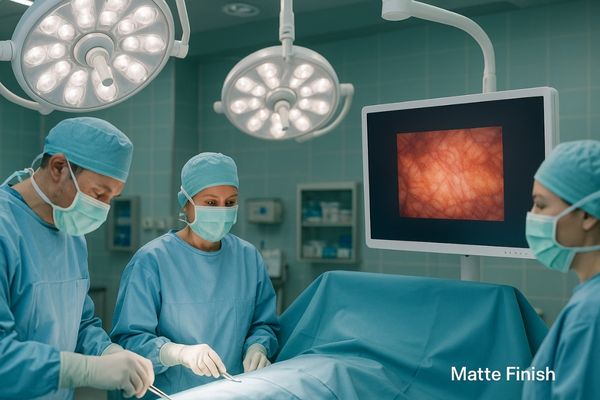
The core function of a matte surface10 is to combat specular reflection—the mirror-like glare that occurs when bright light sources bounce off a smooth surface. By creating a micro-textured topography on the glass, a matte finish ensures that incoming light is scattered in countless different directions. This turns a sharp, distracting reflection into a soft, diffuse glow that is much less fatiguing to the eye. This is a crucial feature in environments like operating rooms or brightly lit emergency departments. The downside to this process is that the light originating from the display’s own pixels is also slightly scattered as it passes through the etched surface. This can lead to a marginal reduction in perceived sharpness and a phenomenon known as "sparkle," where individual pixels can appear to have a slightly grainy texture, especially on white backgrounds. For a large dual-screen monitor like the MD45C, designed for environments where ambient light is a major factor, the benefits of superior glare reduction11 often outweigh the minimal impact on image softness.
Durability varies between chemical and physical surface treatments
Medical displays are cleaned frequently and with harsh chemicals. Their surface treatments must withstand this rigorous use. A finish that wears off or degrades over time is unsuitable for clinical settings.
A matte-etched finish is a permanent alteration of the glass and is extremely durable. A nano oleophobic coating is a chemically applied layer that can degrade over time with repeated abrasion and exposure to certain cleaning agents.
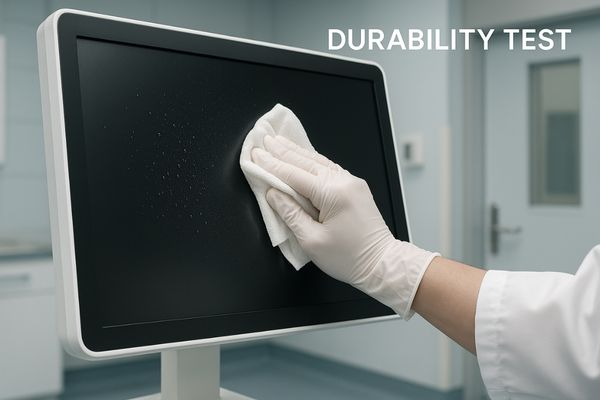
Durability12 is a key differentiator between the two surface types. Because a matte-etched finish is a physical change to the glass itself, it is as durable as the underlying material. It cannot be rubbed off or chemically degraded by standard hospital-grade disinfectants. Its anti-glare properties will last the entire lifetime of the monitor. This makes it a robust choice for high-traffic areas. In contrast, a nano oleophobic coating13 is a very thin chemical layer applied to the surface. While modern application techniques create a strong bond, the coating is still susceptible to wear over time. Repeated rubbing with abrasive materials or cleaning with harsh solvents can slowly break down the fluoropolymer layer, reducing its effectiveness. For a surgical monitor like the MS321PB, which may undergo thousands of cleaning cycles, the long-term durability of the surface finish is a critical consideration. The choice often involves weighing the superior optical performance of the nano coating against the greater resilience of the etched finish, depending on the expected cleaning protocols and lifespan of the device.
Cleaning ease favors nano oleophobic over matte-etched surfaces
Maintaining a sterile environment is paramount in healthcare. Displays must be easy to clean and disinfect. The surface texture plays a significant role in how easily contaminants can be removed.
The ultra-smooth, low-energy surface of a nano oleophobic coating prevents grime from adhering, allowing for quick and effective cleaning. The micro-textured surface of a matte finish, while hiding smudges, can trap contaminants and may require more effort to clean thoroughly.
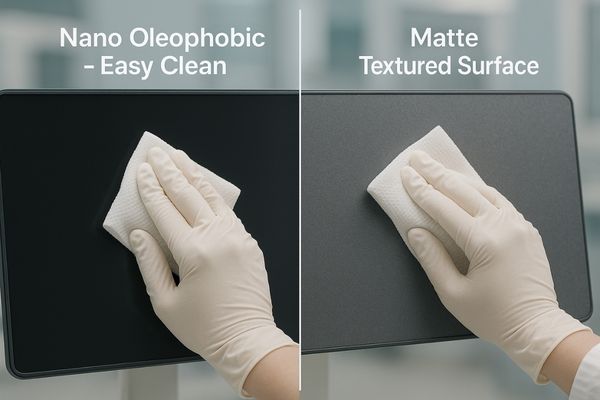
When it comes to cleaning, the nano oleophobic coating14 holds a distinct advantage. Its defining characteristic is its ability to repel oils and liquids. This means that contaminants, from fingerprints to fluid splashes, tend to sit on top of the surface rather than spreading out and adhering to it. A simple wipe with a soft, sterile cloth is usually sufficient to remove them completely, leaving behind no residue. This is a significant benefit in environments where fast turnaround and high levels of hygiene are required. The micro-pitted surface of a matte-etched finish, while effective at hiding smudges, can present a cleaning challenge. The tiny valleys in the texture can trap microscopic debris and liquids, potentially requiring more pressure or specific cleaning techniques to ensure the surface is fully disinfected. For a display like the MS247SA, which is often used in close proximity to the patient, the ease and effectiveness of cleaning are critical safety factors, making the smooth surface of a nano oleophobic finish highly desirable.
Reshin selects coating type based on medical use scenarios
There is no single "best" finish for all medical displays. The optimal choice depends entirely on the clinical application. A reading room has different needs than an operating room.
We strategically select surface finishes based on the display’s intended use. Diagnostic displays prioritize the maximum clarity of nano oleophobic coatings, while surgical monitors often benefit from the superior glare control of matte-etched surfaces.
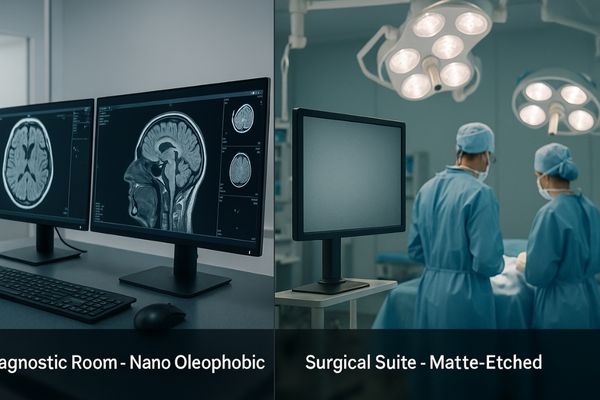
Our design philosophy is rooted in application-specific solutions. We recognize that the ideal display surface for a radiologist’s dimly lit reading room is different from that for a brightly illuminated surgical suite. For diagnostic interpretation, preserving every ounce of image detail is the top priority. Therefore, for advanced diagnostic monitors like the 34" MD51CHY, we typically favor a nano oleophobic coating. This ensures that the high resolution and contrast of the panel are delivered to the clinician’s eye without any softening or distortion, maximizing diagnostic confidence. For the surgical environment, however, managing reflections from powerful overhead lights is often the more pressing concern. In this case, a matte-etched finish is frequently the better choice, as it prevents debilitating glare that could compromise a surgeon’s view. By evaluating the specific environmental conditions, user interactions, and critical performance requirements for each use case, we tailor the surface finish to create the most effective and user-friendly tool for that specific clinical task.
Choosing the Right Finish: Use-Case Analysis
| Clinical Environment | Key Challenge | Recommended Finish | Reasoning |
|---|---|---|---|
| Diagnostic Reading Room | Maximizing Image Detail | Nano Oleophobic | Preserves pixel-level sharpness and contrast for accurate interpretation. |
| Surgical Operating Room | Intense Overhead Glare | Matte-Etched | Diffuses reflections from surgical lights, reducing eye strain. |
| Interactive Touch Displays | Frequent Fingerprints | Nano Oleophobic | Repels oils and allows for easy, frequent cleaning without smearing. |
| General Clinical Review | Mixed Ambient Lighting | Matte-Etched | Provides a good balance of glare control and readability in varied conditions. |
Conclusion
The choice between a nano oleophobic and matte-etched finish is a critical, application-driven decision that balances the trade-off between pristine optical clarity and effective glare management.
📧 Need guidance on selecting the right display finish for your clinical environment? Contact Martin at martin@reshinmonitors.com for expert recommendations from Reshin.
- Explore this link to understand how nano oleophobic coatings enhance clarity and reduce reflections in medical imaging. ↩
- Discover the advantages of matte-etched finishes for reducing glare and improving diagnostic accuracy in clinical settings. ↩
- Explore how nano oleophobic coatings enhance cleanliness and optical clarity in medical environments. ↩
- Learn how matte-etched finishes reduce glare and improve visibility, crucial for surgical precision. ↩
- Explore this link to understand the science behind nano oleophobic coatings and their benefits for display technology. ↩
- Learn about fluoropolymer-based surfaces and their unique properties that enhance various technologies. ↩
- Explore the advantages of matte-etched finishes, including glare reduction and fingerprint concealment, for better visual comfort. ↩
- Learn how light-scattering properties can enhance or impact image quality, especially in diagnostic monitors. ↩
- Learn about high-resolution diagnostic monitors and their critical role in ensuring accurate medical diagnoses through detailed imaging. ↩
- Explore this link to understand how matte surfaces enhance visibility and reduce glare in various environments. ↩
- This resource will provide insights into the importance of glare reduction for better patient care and comfort. ↩
- Understanding durability in medical equipment surfaces is crucial for ensuring longevity and performance, especially in high-traffic areas. ↩
- Exploring the advantages of nano oleophobic coatings can help you make informed decisions about surface finishes in medical devices. ↩
- Explore this link to understand how nano oleophobic coatings enhance cleaning efficiency and hygiene, especially in sensitive environments. ↩


